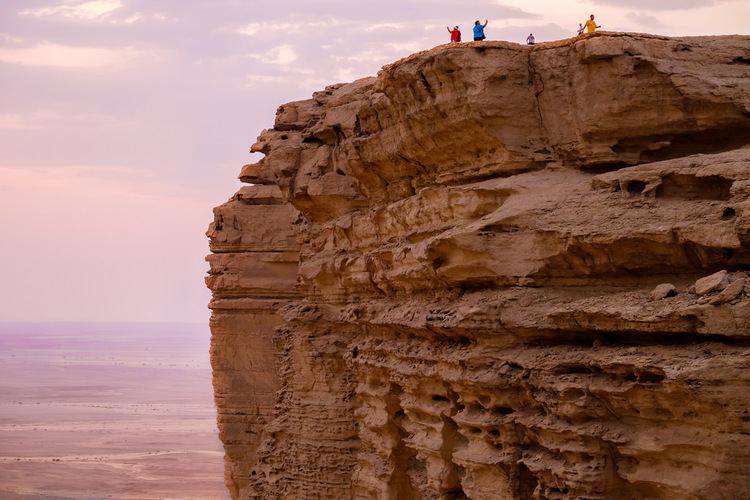 | ||
Riyadh tuwaiq escarpment
Jebel Tuwaiq (pronounced "Twayg", Arabic: جبل طويق) is a narrow escarpment that cuts through the plateau of Nejd in central Arabia, running approximately 800 km from the southern border of Al-Qasim in the north, to the northern edge of the Empty Quarter desert near Wadi ad-Dawasir in the south. It is 600 m high and also has a Middle Jurassic stratigraphic section. The eastern side slopes downwards gradually, while the western side ends in an abrupt manner. The escarpment can be thought of as a narrow plateau, though the locals refer to it as a jebel, or "mount".
Contents
- Riyadh tuwaiq escarpment
- Map of D8ACD8A8D8A7D984 D8B7D988D98AD982 66833 Saudi ArabiaE280AD
- Tuwaiq mountain
- Petroleum geology
- References
Map of %D8%AC%D8%A8%D8%A7%D9%84 %D8%B7%D9%88%D9%8A%D9%82 66833, Saudi Arabia%E2%80%AD
Many narrow valleys (wadis) run along its sides, such as Wadi Hanifa, and a group of towns lie on its central section, including the Saudi capital, Riyadh. Many settlements have historically existed on either side of it as well, such as those of Sudair and Al-Washm. The Tweig escarpment is mentioned in Yaqut's 13th century geographical encyclopedia under the name Al-'Aridh, though for the past few centuries that name has applied only to the central section of it, around Riyadh.
Tuwaiq mountain
Petroleum geology
The Arab-D (Upper Jurassic) unit of the Riyadh Group makes up one of the largest petroleum reservoirs in the world. Bureau and Saudi Aramco researchers conducted a high-resolution LIDAR survey of Middle Jurassic outcrops of the Tuwaiq Mountain limestone along the Tuwaiq Mountain Escarpment near the city of Riyadh, Saudi Arabia. This study was a first step towards building a quantitative 3-D geologic model for use as an analog to the lower Arab-D reservoir. Outcrop analogs like this one are critical to understanding reservoir performance on the flow-unit scale (1 to 30 meters). Although seismic data allow geologists to gain information about large-scale reservoir compartmentalization (>30 meters), flow-unit scale reservoir parameters are far below seismic imaging capability and inter-well spacing.
High-precision laser scans were used as a template upon which stratigraphic interpretation were made allowing researchers to characterize sub-seismic, flow-unit scale reservoir properties of Jurassic bioherms in an effort to better understand optimum production techniques of this enormous reservoir.
